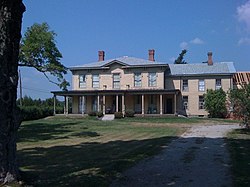
The Great Chicago Fire was a conflagration that burned in the American city of Chicago during October 8–10, 1871. The fire killed approximately 300 people, destroyed roughly 3.3 square miles (9 km2) of the city including over 17,000 structures, and left more than 100,000 residents homeless. The fire began in a neighborhood southwest of the city center. A long period of hot, dry, windy conditions, and the wooden construction prevalent in the city, led to the conflagration. The fire leapt the south branch of the Chicago River and destroyed much of central Chicago and then leapt the main stem of the river, consuming the Near North Side.

Livermore is a town in Androscoggin County, Maine, United States. Formerly in Oxford County, Maine. The population was 2,127 at the 2020 United States Census. It is included in both the Lewiston-Auburn, Maine Metropolitan Statistical Area and the Lewiston-Auburn, Maine Metropolitan New England City and Town Area. High schools students from Livermore attend Spruce Mountain High School in neighboring Livermore Falls. Livermore is known for The Norlands, the Washburn family home.
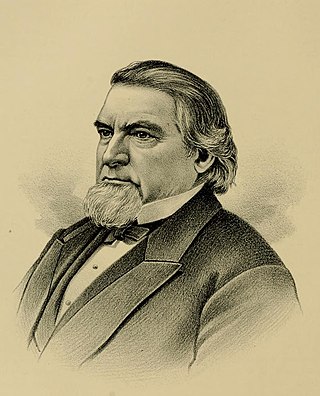
Cadwallader Colden Washburn was an American businessman, politician, and soldier who founded a mill that later became General Mills. A member of the Washburn family of Maine, he was a U.S. Congressman and governor of Wisconsin, and served as a general in the Union Army during the American Civil War.
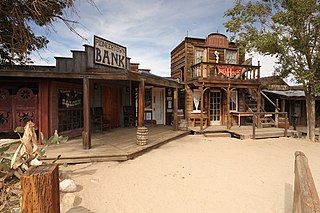
Pioneertown is an unincorporated community of the Morongo Basin region of the High Desert in San Bernardino County, California, United States. It is an 1880s-themed town developed as a shooting location for actors working on Western films and TV series with businesses and residences. The Mane Street Historic District is listed on the National Register of Historic Places. The winding, 4-mile (6.4 km) drive northwest to Pioneertown from Yucca Valley has been designated a California Scenic Drive and the area is now surrounded by privately and federally protected lands.

Charles A. Lindbergh State Park is a 569-acre (2.3 km2) Minnesota state park on the outskirts of Little Falls. The park was once the farm of Congressman Charles August Lindbergh and his son Charles Lindbergh, the famous aviator. Their restored 1906 house and two other farm buildings are within the park boundaries. The house, a National Historic Landmark, and an adjacent museum are operated by the Minnesota Historical Society, known as the Charles Lindbergh House and Museum. Three buildings and three structures built by the Works Progress Administration in the 1930s were named to the National Register of Historic Places. These buildings include a picnic shelter and a water tower, built in the Rustic Style from local stone and logs, and have remained relatively unchanged since construction. Although the property includes shoreline on the Mississippi River, the Lindbergh family requested that the park not include intensive use areas for swimming or camping, so development was kept to a minimum.

The Weald and Downland Living Museum is an open-air museum in Singleton, West Sussex. The museum is a registered charity.
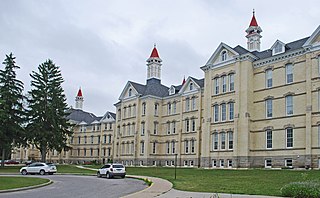
The Traverse City State Hospital, also known at various points as the Northern Michigan Asylum and the Traverse City Regional Psychiatric Hospital, is a decommissioned psychiatric hospital in Traverse City, Michigan. Established in 1881 by James Decker Munson and Perry Hannah, the hospital was in operation from 1885 to 1989. The site has since been redeveloped, reopening in 2002 as The Village at Grand Traverse Commons, a social center including shops, restaurants, office space, and residences. It is the last Kirkbride Building of Michigan's original four left in the state. It was listed on the National Register of Historic Places in 1978 and designated a Michigan State Historic Site in 1985.
The Nelson Family Farm is a historic farm property on Shackley Hill Road in Livermore, Maine. It is locally distinctive for the farmhouse, built about 1830 out of rough-split granite after a fire destroyed the Nelson's first homestead. The farm listed on the National Register of Historic Places in 1992.
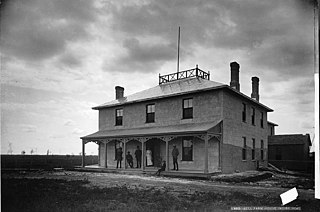
Bell Farm is a heritage farm built in 1882 by William Robert Bell on ten miles (16 km) square or 60,000 acres (24,000 ha) at Indian Head in Saskatchewan. The Bell Farm Barn is amongst the ten top most endangered sites by the Heritage Canada Foundation. The round structure consisted of a silo which could be used also as a lookout tower. The silo had a capacity of 4,000 bushels of oats and 100 tons of hay. The surrounding area could house 36 horse and an office. Having the silo centrally located greatly reduced labour involved in livestock feeding and resulted in a stronger facility than the rectangular structures.
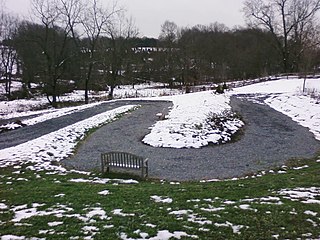
The Howard County Conservancy is a non-profit land trust that operates a nature center in Woodstock, Maryland. It is located at the 300-year-old, 232-acre (0.94 km2) Mt. Pleasant Farm.

Lynfeld is a farm located on South Road in the Town of Washington, New York, United States, near the village of Millbrook. Its farmhouse, a frame structure dating to the late 19th century, is in an unusual shape for a building in the Italianate architectural style.
Town–Hollister Farm is a historic home and farm complex located on the western side of the hamlet of North Granville in Washington County, New York. The property is of both historical and architectural significance. The farm encompassing 275 acres includes a Federal-style farmhouse built around 1810 and multiple 19th and 20th-century agricultural-related structures which illustrate the agricultural activities of the farm and offer information on the vernacular design and timber framing practices of the region. The property was recommended to the New York State and National Historic Registries in 2007 and listed on the National Register of Historic Places in 2008.

The John Welsh House, also known as "Rauhala," is an historic American home that is located in Wyndmoor in Springfield Township, Montgomery County, Pennsylvania.
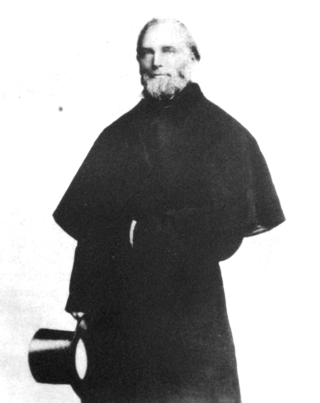
Cyrus Woodman was a lawyer, businessman and land speculator whose business affairs were influential in the State of Wisconsin. He was native of Buxton, Maine, and a graduate of Bowdoin College and Harvard Law School. He was a charter member of the Wisconsin Historical Society and an associate and close friend of the Wisconsin politician Cadwallader C. Washburn. In semi-retirement after 1864 he lived in Cambridge, Massachusetts.

The Dimond Hill Farm is a historic farm at 314 Hopkinton Road in the western rural section of Concord, New Hampshire. Established on land that was first farmed by Ezekiel Dimond in the mid-18th century, this area has been farmed by the members of the Abbott-Presby family since 1827, and is one of the few remaining working farms in the city. The main house is an 1892 rambling structure that connects the family living space with the large barn, which dates to c. 1882. The oldest structure on the farm is a corn crib from the 1850s. The farm was listed on the National Register of Historic Places in 2007. The owners operate a farm stand on a seasonal basis.

Thelma Cowey Swain was an American philanthropist. She contributed significant funds to non-profit organizations in Maine and also established scholarships at Middlebury College, Tufts University, and at each of the seven colleges of the Maine Community College System. In 2010 her estate bequeathed $1 million to The Foundation for Maine's Community Colleges. She was posthumously inducted into the Maine Women's Hall of Fame in 2010.

Ethel "Billie" Wilson Gammon was an American educator and living history museum founder and director. In 1974 she founded the Washburn-Norlands Living History Center on the former estate of Israel Washburn in Livermore, Maine, and served as its volunteer executive director until 1991. Her educational and outreach programs brought 40,000 visitors to the site annually by the end of the twentieth century. She was inducted into the Maine Women's Hall of Fame in 1997.

Scamman Farm is a historic farmstead at Portsmouth Avenue in Stratham, New Hampshire. The farm was established by members of the Scamman family in the 1660s, and includes a barn dating to the mid-18th century, believed to be one of the oldest in the state, and a Greek Revival farmhouse dating to 1836. The property, now a subset of the family's original holdings, was listed on the National Register of Historic Places in 2019.

The Marin Art and Garden Center is a botanical garden in Ross, California. The site is 11 acres and features gardens and historic buildings, including the Barn Theater, which is home to theater company Ross Valley Players. Admission to the gardens is free.
